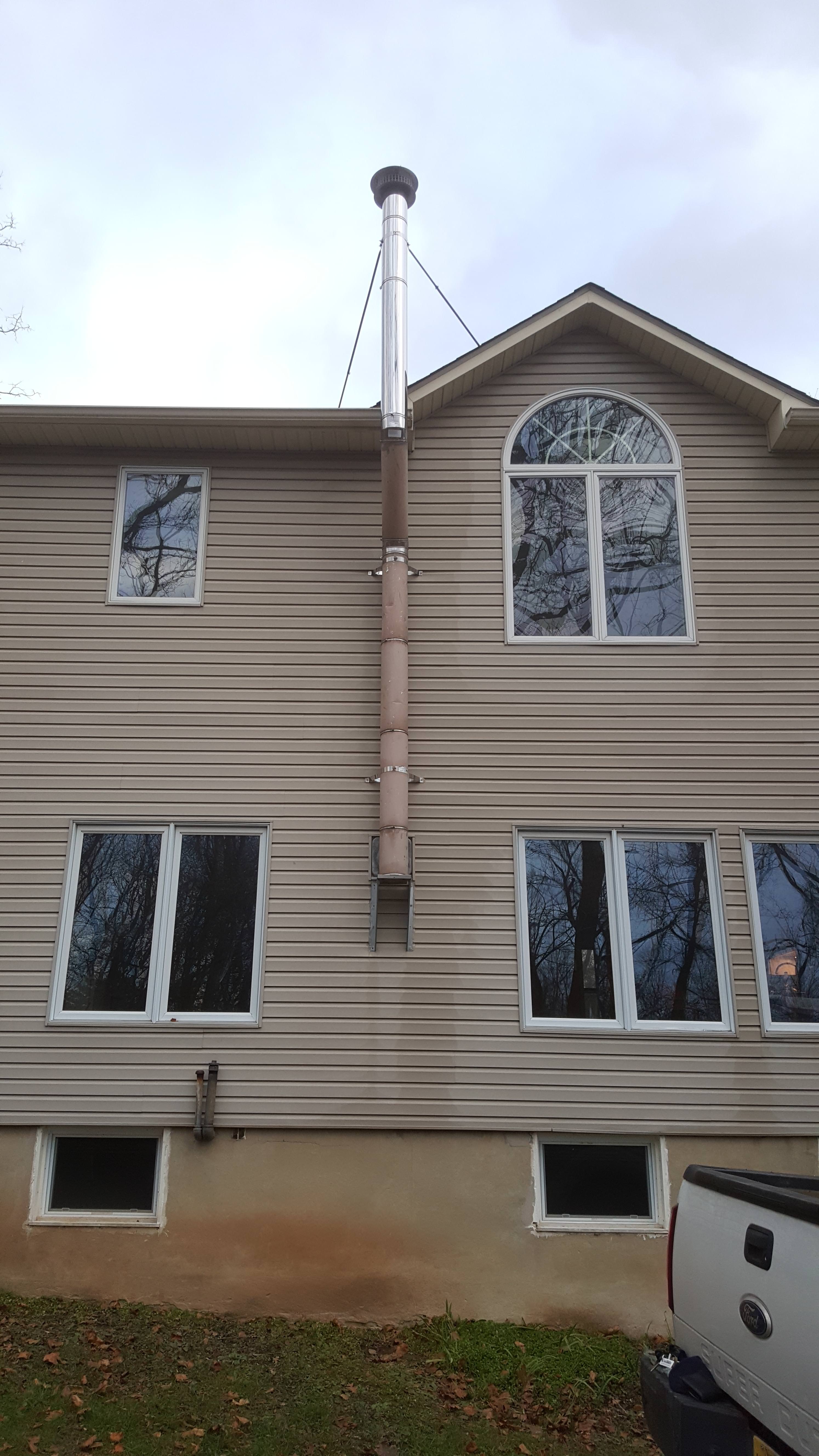In our house currently is an old coal stove on the first floor that is vented through about 24' of Selkirk Class A chimney which runs up an outside wall:

The chimney is in good shape and I'm guessing was replaced at some point because the stove itself dates to the early 80s according to the literature the previous owner left. The wife wants to "reclaim" the space currently occupied with the stove as it's adjacent to the dining room (long story). However, if I ran the chimney down another three or four sections I could tee it through the basement wall. I have 8 sections (24') of Selkirk chimney along with an Englander 28-3500 furnace from my old house. Hooking up the chimney and getting it mounted is fairly straightforward, but would 33-36' of chimney produce excessive draft?

The chimney is in good shape and I'm guessing was replaced at some point because the stove itself dates to the early 80s according to the literature the previous owner left. The wife wants to "reclaim" the space currently occupied with the stove as it's adjacent to the dining room (long story). However, if I ran the chimney down another three or four sections I could tee it through the basement wall. I have 8 sections (24') of Selkirk chimney along with an Englander 28-3500 furnace from my old house. Hooking up the chimney and getting it mounted is fairly straightforward, but would 33-36' of chimney produce excessive draft?

